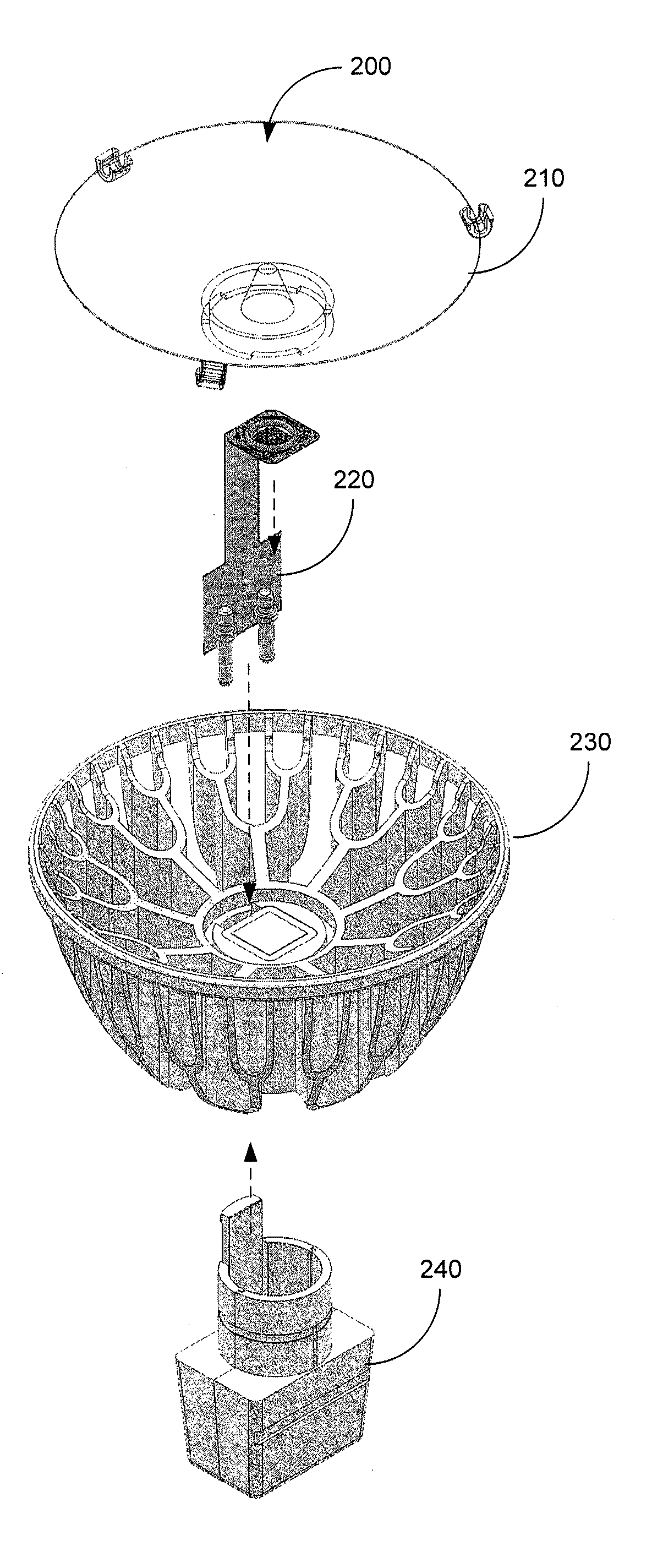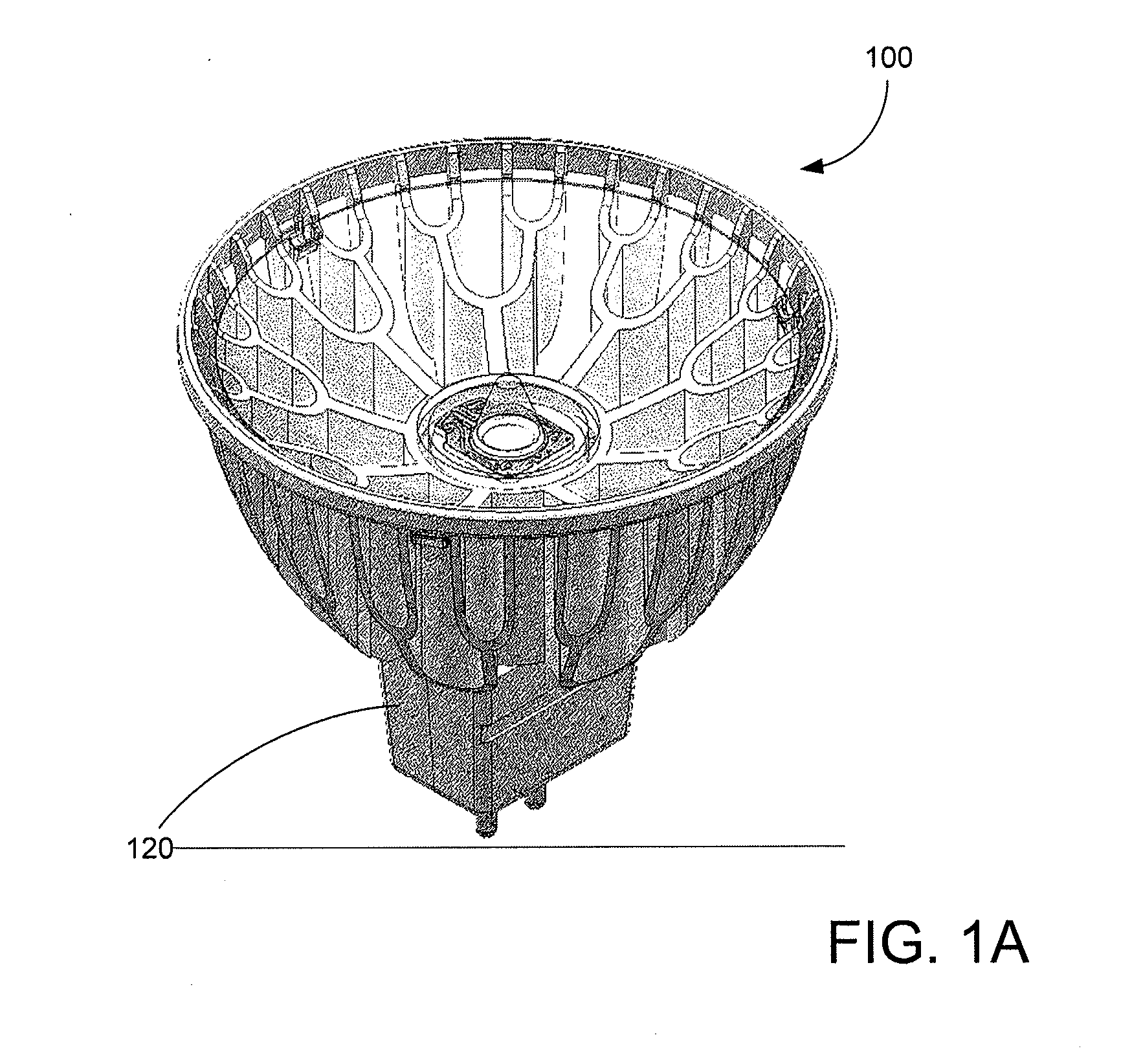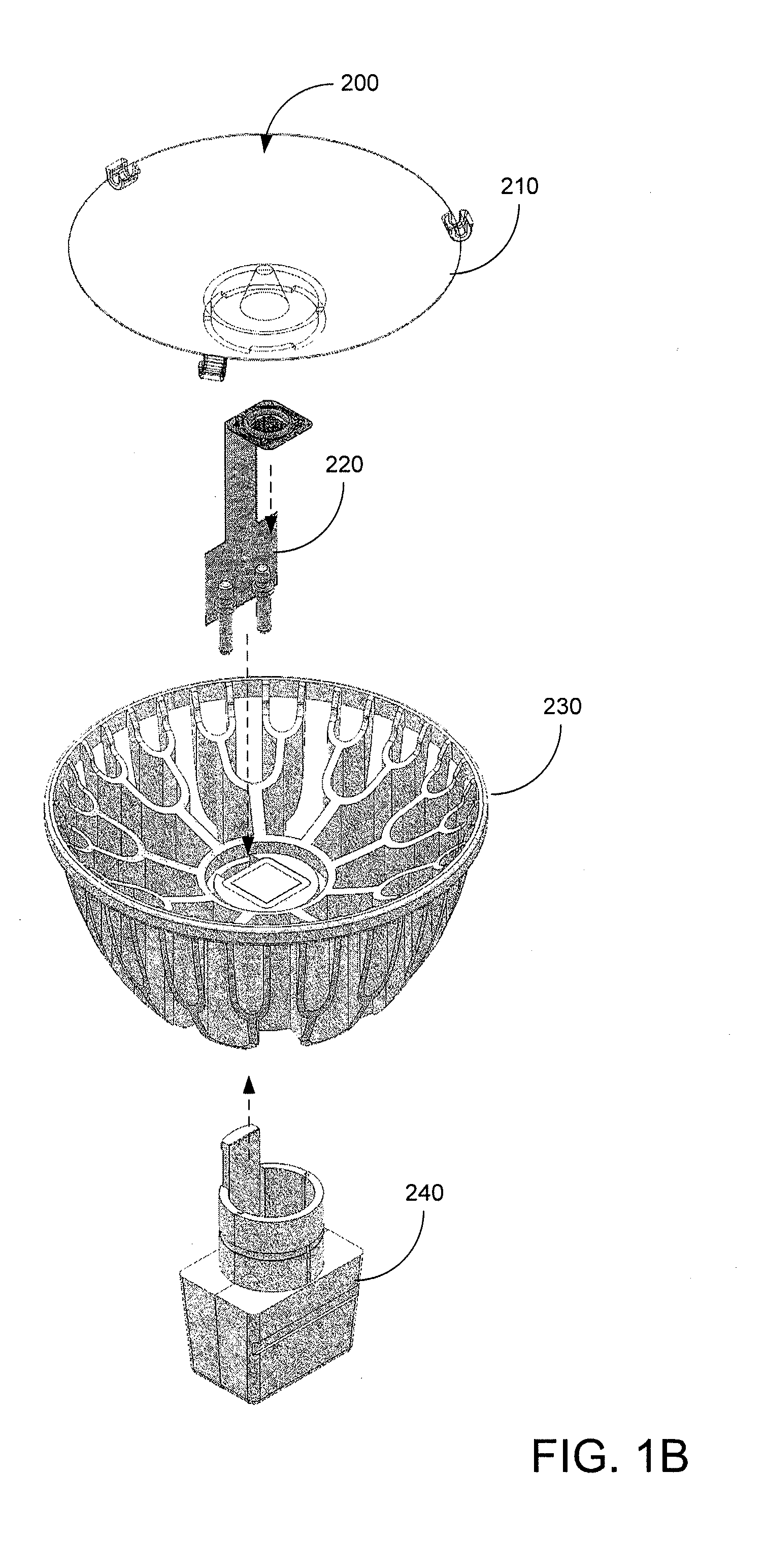High Intensity Light Source
a high-efficiency, light source technology, applied in the field of lighting, can solve the problems of inability to immediately provide full brightness of fluorescent lights, many people are still reluctant to switch to these alternative light sources, and the lamps cannot be simply disposed of at the curbside, so as to increase the cost or size of the device, and achieve high-efficiency lighting sources. , the effect of increasing the cost of the devi
- Summary
- Abstract
- Description
- Claims
- Application Information
AI Technical Summary
Benefits of technology
Problems solved by technology
Method used
Image
Examples
Embodiment Construction
[0028]FIG. 1A illustrates an embodiment of the present invention. More specifically, FIG. 1A-B illustrate embodiments of MR-16 form factor compatible LED lighting source 100 having GU 5.3 form factor compatible base 120. MR-16 lighting sources typically operate upon 12 volts, alternating current (e.g. VAC). In the examples illustrated, LED lighting source 100 is configured to provide a spot light having a 10 degree beam size. In other embodiments LED lighting sources may be configured to provide a flood light having a 25 or 40 degree beam size, or any other lighting pattern.
[0029]In various embodiments, an LED assembly described in the pending patent applications described above, and variations thereof, may be used within LED lighting source 100. Theses LED assemblies are currently under development by the assignee of the present patent application. In various embodiments, LED lighting source 100 may provide a peak output brightness of approximately 7600 to 8600 candelas (with appro...
PUM
| Property | Measurement | Unit |
|---|---|---|
| angle | aaaaa | aaaaa |
| time | aaaaa | aaaaa |
| power | aaaaa | aaaaa |
Abstract
Description
Claims
Application Information
 Login to View More
Login to View More - R&D
- Intellectual Property
- Life Sciences
- Materials
- Tech Scout
- Unparalleled Data Quality
- Higher Quality Content
- 60% Fewer Hallucinations
Browse by: Latest US Patents, China's latest patents, Technical Efficacy Thesaurus, Application Domain, Technology Topic, Popular Technical Reports.
© 2025 PatSnap. All rights reserved.Legal|Privacy policy|Modern Slavery Act Transparency Statement|Sitemap|About US| Contact US: help@patsnap.com



